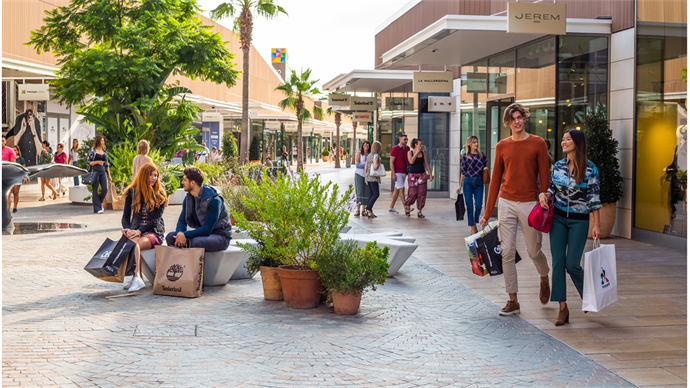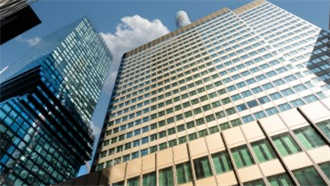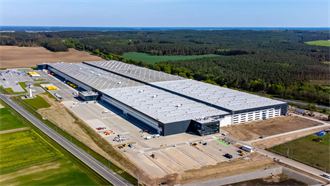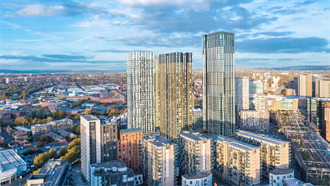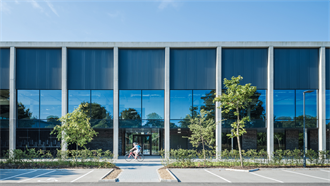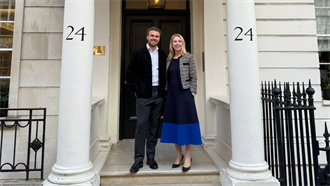In an interview with RetailWatch, Stephan Fickl, Neinver’s new group leasing director, explains how the firm’s strong brand partnerships continue to be the key to resilience.
RW: How did Neinver tackle the crisis in this highly atypical year?
Stephan Fickl (SF): Overall, I think this has been the most challenging year that most of us have ever experienced. The challenges that we have been facing have required effort and an extra dose of flexibility, sensibility, increased communication and collaboration throughout many fields of our society.
In our industry, this has also been particularly true between retail tenants and operators. Over the years, we have developed a mutually beneficial relationship with our brand partners, understanding and supporting their strategies and managing their overstock, offering them flexible and individual solutions. This crisis has highlighted this cooperative relationship between retail tenants and operators.
Since the start of the pandemic, we have reviewed our tenants’ situation to help them with their liquidity through different relief agreements. We have been following up individually with each brand, on a case-by-case basis, considering the situation of each centre, the different national regulations and the long-term relationships that ensure business continuity for everybody.
In addition, we have provided them with advice and support in implementing health and safety measures, namely providing a handbook with protocols and guidelines, recommendations on the display of goods in the shops, and on handling promotions, and we have held webinars to clarify the necessary measures and to discuss joint improvements.
RW: What kind of customer response are you seeing?
SF: Customer response varies from one market to another and from centre to centre even within national borders, depending on the Covid-19 situation and restrictions. We have seen a progressive growth in outlet demand since the reopening of our centres, with sales and footfall gradually increasing at different paces in different locations.
Visits seem to have become more productive; we are balancing out the decrease in footfall with higher average tickets. For consumers, the shopping experience now combines three elements: safety, product and price. Safety measures are the biggest factor influencing the shopping experience. As often happens in crises and during downturns, purchases tend to become more rational: promotions and discounts are vital incentives for shoppers, and despite online retail gaining market share, enjoying shopping in physical stores is still the preferred shopping format.
Regarding dwell time, in general, visits are shorter as shoppers seem to plan their visit in a more product-driven way. Also, the fact that F&B is limited, in some cases, is directly limiting dwell time at the centres.
We will have to see how the market evolves, and how consumer confidence recovers, but we remain cautiously optimistic about these first results. Strong outlet centres proved to be resilient during previous economic downturns and I’m confident that they will continue to be so in the future as well.
RW: What are the current leasing trends?
SF: The trend has been moving towards sports and outdoor wear for a while and with the lockdown and people working from home, this trend has been accelerated.
Formal wear with business attire has lost ground to some of the other categories. With the travel restrictions the luggage sector has unfortunately suffered a lot. We are always trying to attract the latest and newest brands to our outlets and keep the tenant mix as relevant and appealing to the catchment as possible.
A category that is very interesting for the outlets is beauty. The cosmetics brands are very popular and a great way to diversify the tenant mix.
Another trend one can see is that the brands are expecting greater flexibility and less risk when opening new stores. Capital expenditure has been reduced and there is limited appetite to expand as aggressively as in the past. A few brands are deciding to go for shorter term leases and open pop-up stores.
This represents a great opportunity for us to acquire new brands for our outlets. Lastly, we expect to see more and more retailers reducing the number of stores they have, especially in the full price sector. A number will also go insolvent, unfortunately.
RW: What is your current view on experiential aspects, e.g. F&B, for driving footfall?
SF: Before Covid-19, customers were seeking the ‘wow’ effect, and traditional shopping centres and outlets had to refocus to enhance their retail offer with more leisure and entertainment options. Now, shoppers’ priorities have refocused completely, and leisure and the experience have given way to safety and rationality.
However, in a post-lockdown era, consumers’ appetite for human connection and social experiences has probably become even stronger than before. People have a biological, emotional and cultural need to be together, socialise, interact and shopping centres play a big social and societal role, which goes beyond the simple act of consumption.
In this context, leisure and F&B still have a key role to play, but need a strategic, well thought-out approach, from demographics to knowing your customer needs and current habits.
I think, operators will have to demonstrate their creativity in order to adapt in the short and long-term. For instance, our outlet centre close to Milan – Vicolungo The Style Outlets – recently opened the Kinder Joy of Moving Park, a 1,700 m2 space for children
described as a recreational and motor skills development playground. This is a unique project, developed by the Ferrero Group and supported by the Municipality of Vicolungo, with whom we joined forces to make it real.
For Neinver, it is one way to enhance the shopping experience for the more than 4 million visitors we receive every year at this centre, including many families.
RW: What makes outlets more resilient than other retail types, and how can you help defend this resilience long term?
SF: Outlet centres are a relatively new channel that has grown very quickly over the past decades. They have proved to be one of the most successful and resilient businesses in the retail market even in recessions.
Consumers have increasingly incorporated outlets into their shopping habits. For brands, meanwhile, outlet stores have become a strong and successful option and an established channel in their distribution strategies, allowing them to sell their surplus and guaranteeing both control and quality of the products.
Turnover rent models have also proved effective. These leasing structures have led to a win-win interaction between operators and retailers, with higher daily support to the brands in order to increase each centre’s value and performance.
The density of outlet centres’ space, in square metres per capita of population, is also much lower than that of traditional shopping centres because outlets depend on brands’ overstock and the complex process for obtaining development permissions. In Europe, outlet centres represent only 2% of total retail space.
To defend this resilience in the long term we need to continue doing the one thing that we have been doing over the last 20 years: listening to the consumer and being agile to adapt.
The strongest outlet centres have proved successful because they have kept aligned with consumers’ preferences over the years.

